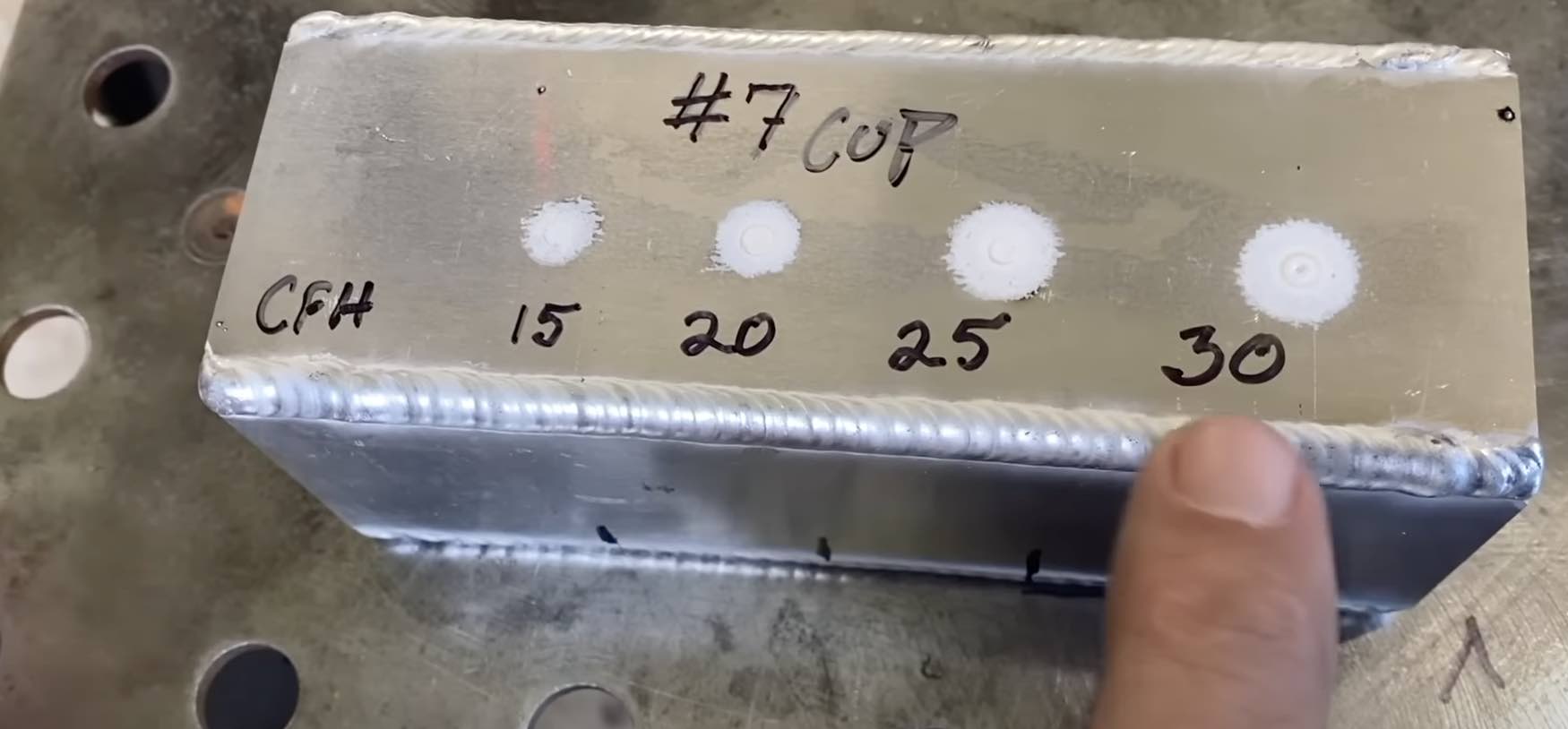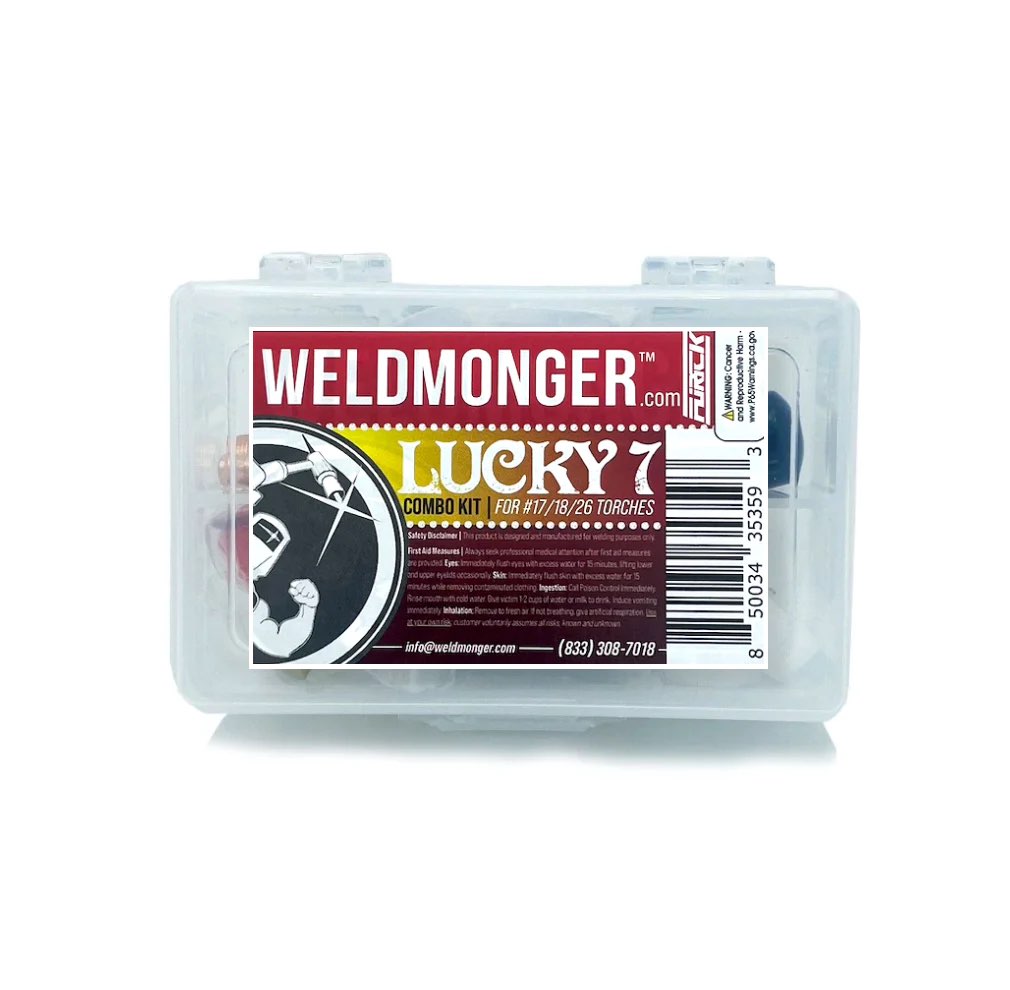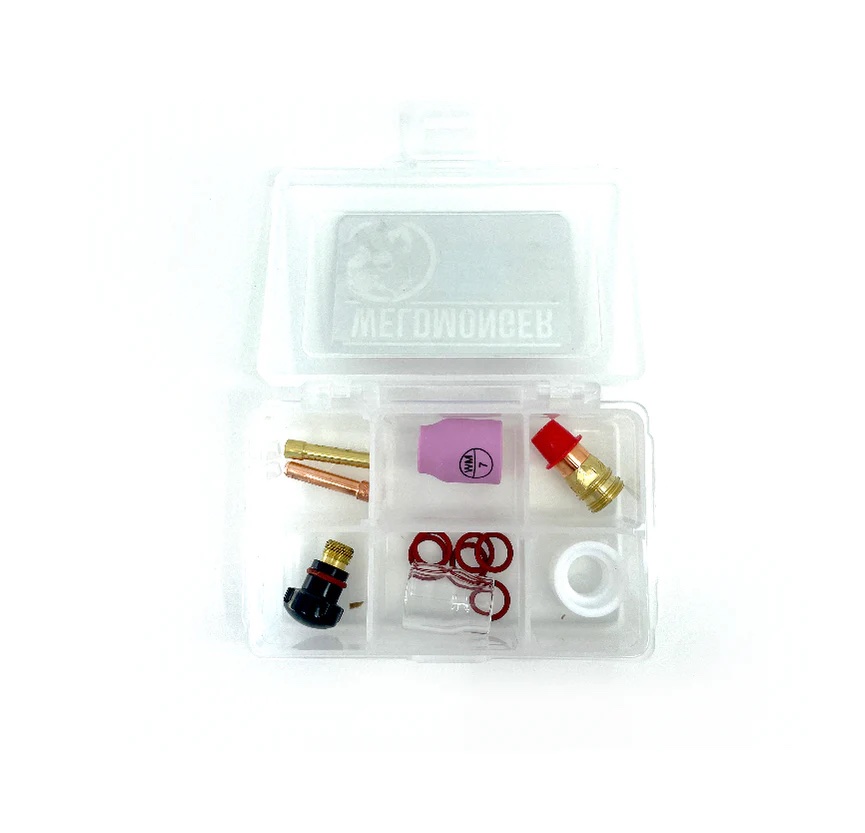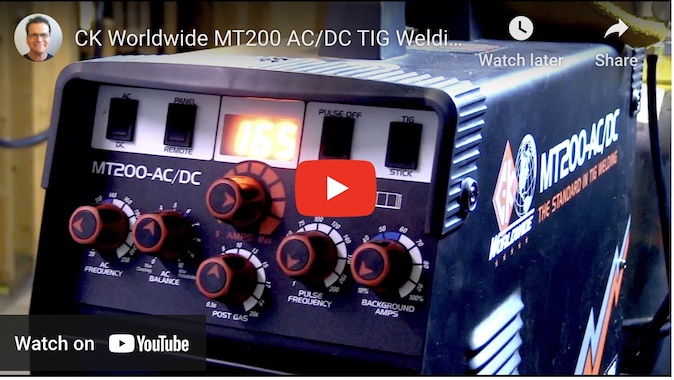What affect does argon flow rate have on aluminum cleaning action for tig welding?
Argon flow rate, cup size, and AC balance are all related.
This video explains how flow rate affects cleaning action on aluminum.

Lucky 7 combo kit with one clear 7 cup and a pink ceramic #7 with mounting hardware for 17 torch
I think we can all agree that argon shielding gas plays a critical role in the cleanliness and quality of aluminum TIG (Tungsten Inert Gas) welding.
But how does cup size, argon flow rates, and ac balance affect the cleaning action of the AC arc?
The reverse polarity or electrode positive part of the AC current is where we get a phenomenon called "cleaning action" where electrons and ions act as a sandblasting action to break up aluminum oxides on the surface of aluminum.
AC balance is the setting that controls how much cleaning action you get.
But argon flow rate also has an affect on cleaning action because....
The cleaning action only wants to go where there is adequate argon shielding.
We tested different flow rates using the same size cups to determine how flow rate affected the size of the cleaning path.
The primary effects of argon shielding on the cleaning action of the AC (Alternating Current) arc in aluminum TIG welding are as follows:
- Oxide Removal: Aluminum readily forms an oxide layer on its surface when exposed to air. This oxide layer must be removed for a successful weld. The AC arc in TIG welding helps break down and clean the oxide layer, while the argon shielding gas provides protection by displacing the air and preventing further oxidation. As the arc cycles between positive and negative polarities, it helps clean and remove the oxide layer, allowing for a strong and clean weld.
- Improved Weld Purity: Argon is an inert gas, which means it does not chemically react with the molten aluminum or other welding materials. This inert nature of argon ensures that impurities from the atmosphere, such as oxygen and nitrogen, do not contaminate the weld pool. A clean weld pool with minimal impurities flows better and makes for a stronger and more reliable weld.
- Stability and Arc Control: Argon shielding gas also helps maintain a stable arc during TIG welding. A stable arc is essential for precise control over the heat input and the weld puddle, resulting in cleaner and more consistent welds.
- Bead Appearance: Proper argon shielding contributes to the aesthetics of the weld bead. It helps create a smooth, well-defined, and uniform weld appearance.
- Reduced Tungsten Contamination: In TIG welding, a tungsten electrode is used to generate the arc. Argon shielding helps prevent tungsten contamination by preventing the tungsten electrode from oxidizing or eroding too rapidly. This ensures the electrode maintains its shape and composition throughout the welding process, allowing for precise control of the arc.
Argon shielding gas is crucial for the cleanliness and quality of aluminum TIG welding. It prevents further oxidation, maintains a clean weld puddle, provides arc stability, improves bead appearance, and reduces tungsten electrode contamination. All of these factors contribute to producing high-quality and strong aluminum welds.


















